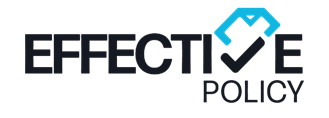
Disability support and aged care are constantly changing, so ensuring staff members are well-prepared with the necessary skills and knowledge is paramount. One effective way to achieve this is the implementation of learning plans tailored to the unique needs of NDIS or aged care providers. This professional development training for employees or staff enhances and contributes to high-quality care and support services. This article explores the steps in creating and monitoring learning plans for NDIS or aged care staff.
Understanding Learning Plans
A learning plan is a structured document outlining the objectives, activities, and resources required for an individual or team to acquire new skills or enhance their existing knowledge. In the context of the NDIS or aged care, designed learning plans address specific competencies required to deliver person-centred care, adhere to industry standards, and comply with regulatory requirements.
Step 1: Identify Needs
The first step in creating an effective learning plan is to identify the learning needs of the staff members. Achieve this step through various methods such as surveys, performance evaluations, feedback sessions, or consultation with supervisors and team members. It’s essential to consider individual learning goals and organizational requirements when assessing learning needs.
Step 2: Establish Objectives
After identifying the learning, the next step is establishing clear and measurable learning objectives. These objectives should align with the identified needs and contribute to the organization’s goals. Examples of learning objectives for NDIS or aged care staff may include improving communication skills, enhancing cultural competence, mastering specific caregiving techniques, or understanding relevant legislation and policies.
Step 3: Select Activities and Resources
After defining the learning objectives, the next step is determining the most appropriate learning activities and resources to help staff members achieve those objectives. Learning activities may include workshops, seminars, online courses, on-the-job training, mentoring, or self-directed study. It is vital to offer various options to accommodate different learning styles and preferences. Additionally, identifying relevant resources such as training materials, manuals, videos, or human resource management consulting firms can further support the learning curve.
Step 4: Develop a Timeline and Schedule
Establishing a timeline and schedule for completing the learning activities outlined in the plan is crucial to ensure accountability and progress tracking. This timeline should be realistic, and there are factors to consider, such as staff availability, workload, and organizational priorities. Regular check-ins and progress reviews keep staff members motivated and on track to achieve their learning goals.
Step 5: Monitor Progress and Provide Support
Monitoring progress is essential to ensure staff members succeed in their learning objectives, whether it’s through regular assessments, feedback sessions, workforce induction systems, or self-assessment tools. It’s also necessary to provide ongoing support and guidance to staff members throughout the learning process. It may involve assigning mentors or coaches, facilitating peer learning opportunities, or giving access to additional resources and assistance when needed.
Step 6: Evaluate and Adjust as Needed
Evaluating its effectiveness is essential to make necessary adjustments after implementing the learning plan. This step may involve gathering feedback from staff members and supervisors and reviewing the outcomes against the initial learning objectives. Based on this evaluation, modifying the learning plan is essential to meet the needs of staff members and the organization.
In conclusion, creating and monitoring learning plans are proactive approaches to supporting professional development and ensuring the delivery of high-quality care and support services. These vital steps help organizations empower their staff to continually enhance their skills and knowledge in alignment with evolving industry standards and best practices. Ultimately, investing in the ongoing learning and development of staff members benefits the individuals involved and contributes to the overall success and sustainability of the organization.
Do you sometimes feel like you are throwing a whole training catalogue at your staff, but are unsure if it makes any difference to service quality or efficiency?
Join us on May 15 for a transformative journey to creating & monitoring learning plans For NDIS or Aged Care Staff. Don’t miss this opportunity to connect with like-minded professionals, network, and gain valuable knowledge to drive your organization’s success. Register now to secure your spot!

